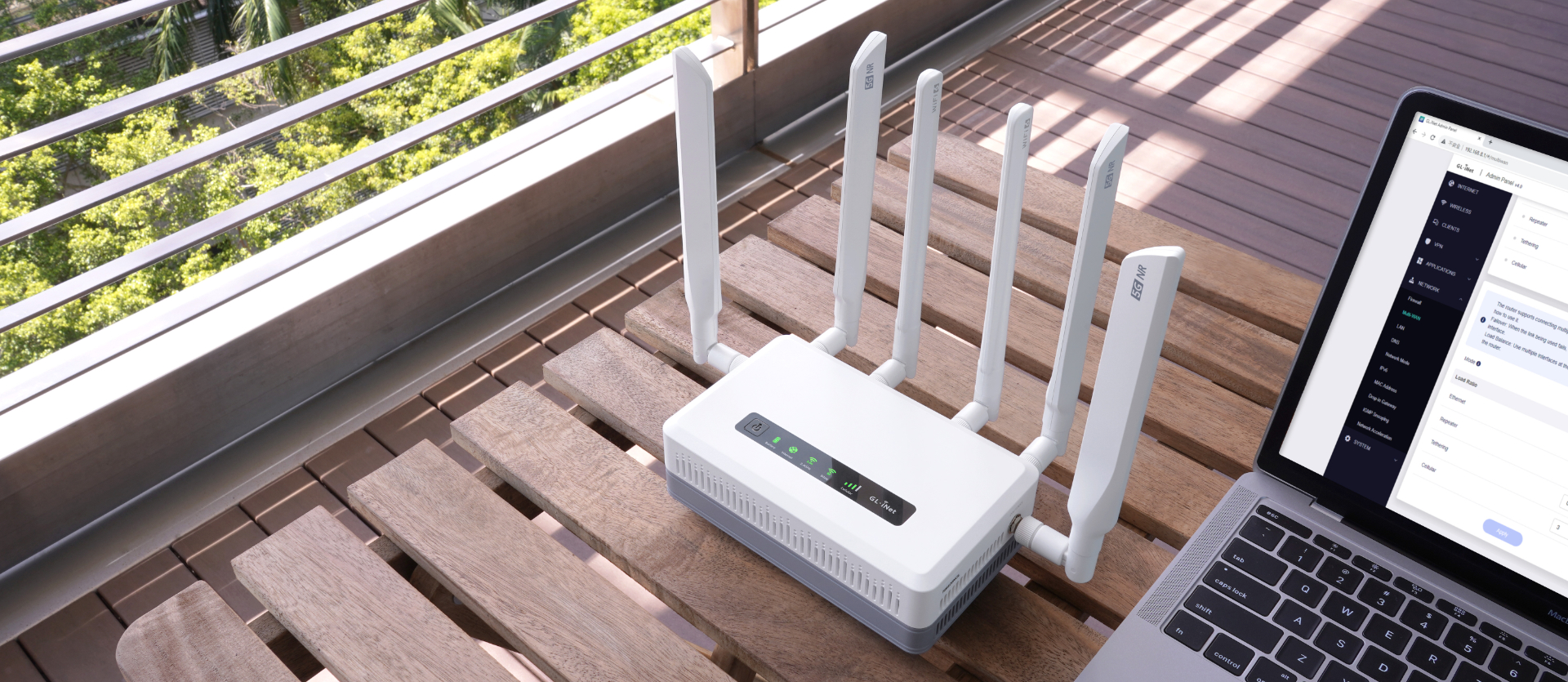
GL-iNet Puli AX: 30-second review
Routers with a 5G (4G) capability aren’t unusual, as some locations can’t get wired broadband services.
But in the GL-iNet Puli AX router (aka GL-XE3000), being able to distribute a cellular data connection is only a small part of the story. This router will wirelessly distribute a conventional wired broadband connection from a modem with up to a 2.5GbE connection and support many users with 574Mbps (2.4GHz) and 2402Mbps (5GHz) of dual-band throughput.
There is also a single gigabit ethernet downlink for connecting a wired network, and the service is protected with an integrated 6400mAh/47.4Wh battery that kicks in should the power be cut.
Cellular data can also be blended with wired broadband, with slots for two SIMs enabling a service failover in the event of the wired service or one of the 5G connections going down.
Using SIMs from two different service suppliers, the GL-XE3000 can provide a practical means to avoid the loss of the internet for home or business customers.
Built around a MediaTek dual-core ARM SoC, this router is power efficient and uses firmware based on the highly respected OpenWRT platform. The OS comes pre-installed with a dedicated VPN Client-Server model, and router-level ad protection, enabling secure surfing for all those connected through it.
Compared with other AX3000 routers, the GL-XE3000 might seem on the pricey side, but given the special features that GL-iNet put inside and what that might save you in the event of a lost service, it might be worth the extra.
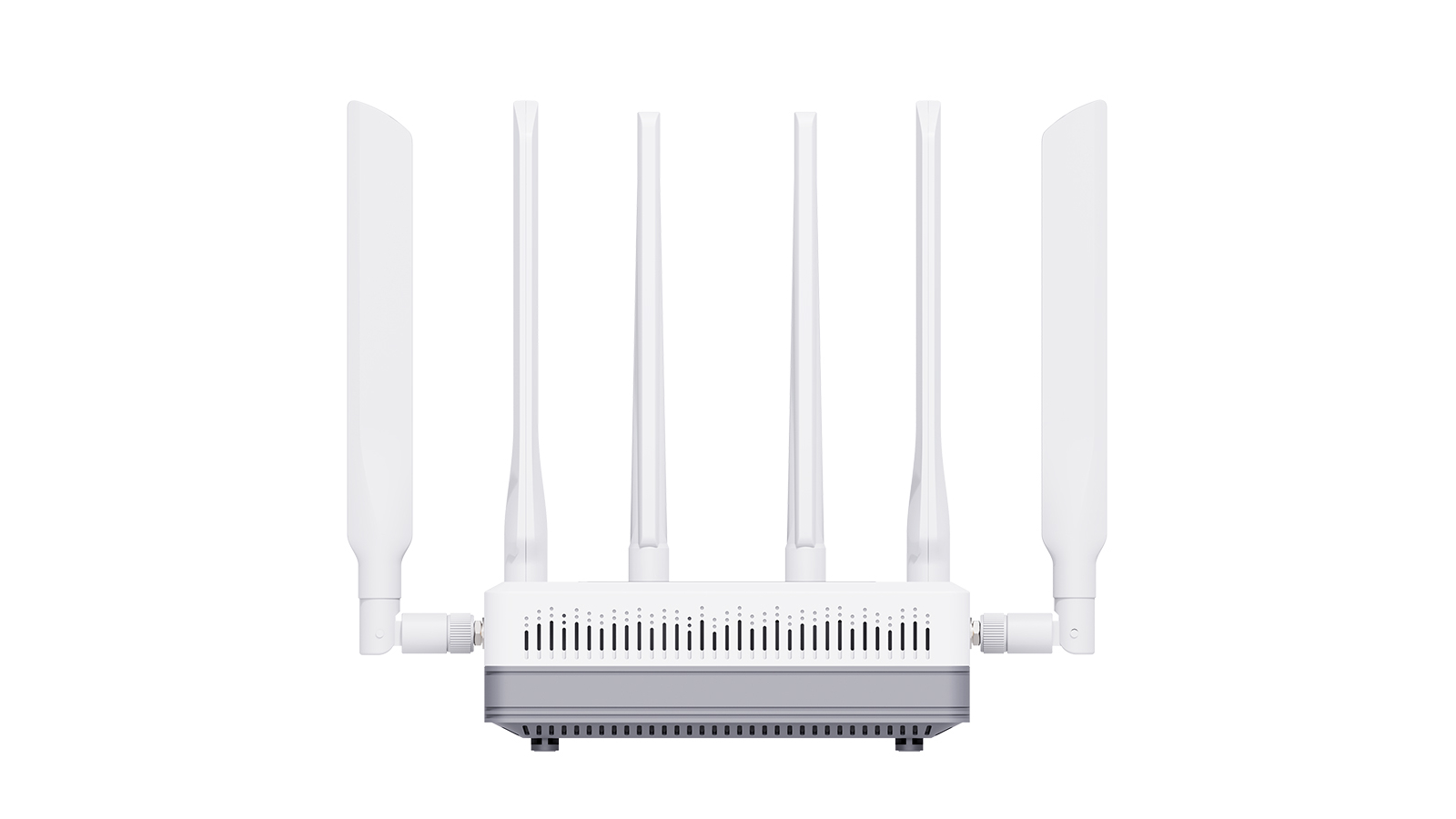
GL-iNet Puli AX: price and availability
- How much does it cost? $390
- When is it out? Available now
- Where can you get it? You can get it directly from GL-iNet and it is also available from Amazon.
Direct from GL-iNet, the GL-XE3000 costs $428.12, down 29% from the MSRP of $556.
It is also possible to buy this router on Amazon.com for $519 with a coupon, slashing another $80 from that MSRP. UK Amazon customers can source it for £489 with Prime next-day delivery.
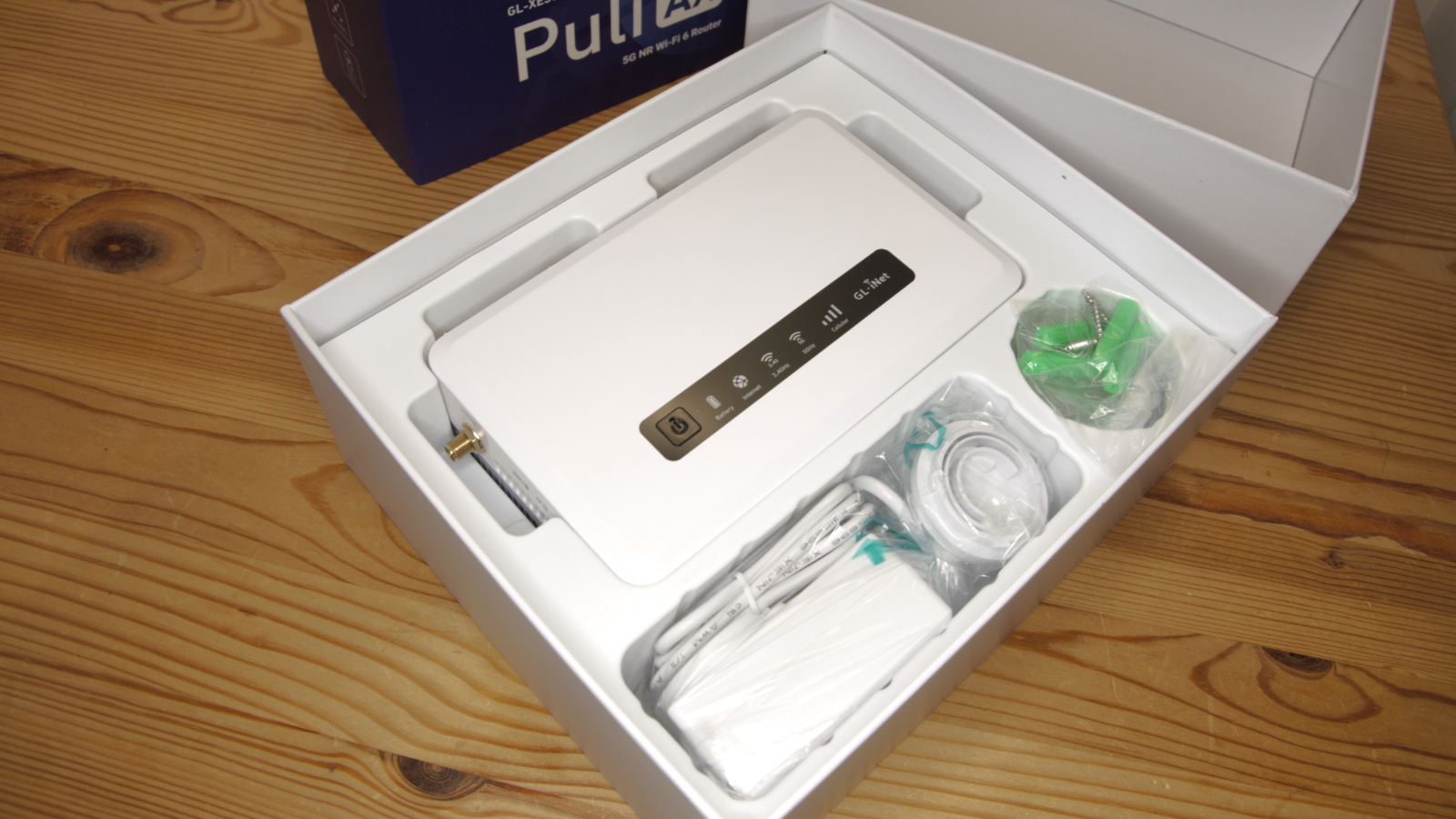
- Value score: 5/5
GL-iNet Puli AX: Specs
GL-iNet Puli AX: design
- Compact
- Ready for most regions
- Four service options
The box containing the GL-XE3000 is packed with useful items that demonstrate the makers want the best possible user experience for its router.
This includes the two-tone router with a detachable mounting plate, six separate antennae, an adhesive sticker for mounting, a wall socket PSU with adapters for US, EU, UK and AU, an Ethernet cable and some paper documentation.
The inclusion of the sticker for attaching the mounting plate was a nice touch, even if only to hold the plate in position while screws are placed (also included) to make it completely secure.
We’ve seen some outlandish router designs in the past few years, but the GL-XE3000 avoids making an artistic statement and instead goes for a business-oriented look.
It’s a simple box with curved corners and a bevelled top with ventilation on four sides and a basic lit icon status strip across the top. Nothing here is likely to confuse anyone who has previously deployed a router, and a simple two-page pamphlet called ‘Let’s get started’ is there to support those who lack confidence.
That information is useful, since it reveals that while four of the antennae are marked for 5G and two for WiFi, the 5G ones don’t all attach to the four threaded SMB (SubMiniature version B) connectors on the back, but two are placed on the ones either end.
On the rear are two RJ45 LAN ports, one marked 2.5GbE WAN and the other LAN, and a single USB 2.0 port.
That USB port provides a fourth comms option, as the port can connect a phone to share its cellular connection through the router.
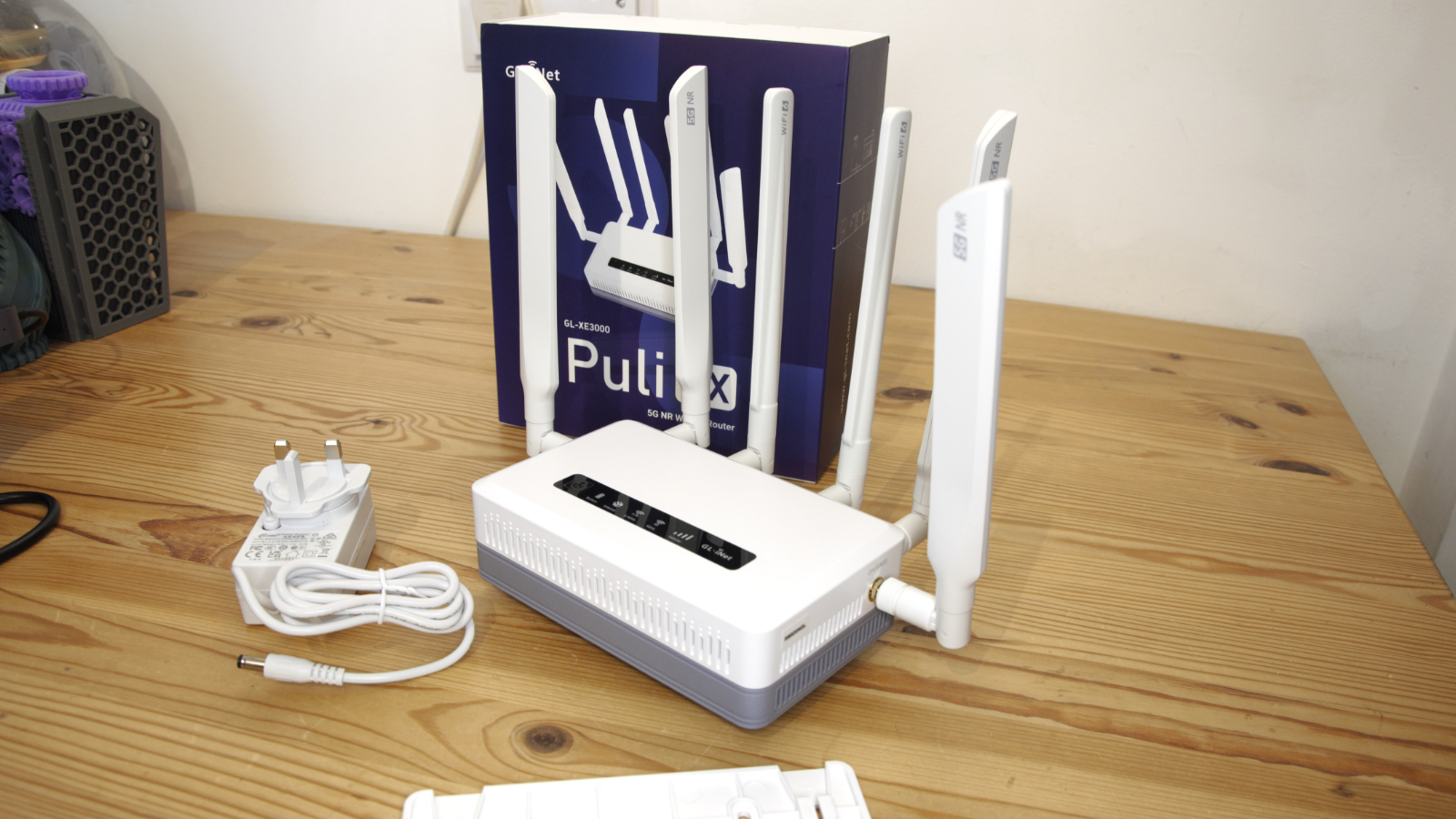
What seems mildly odd is that the second LAN port, the one that will connect a wired network to the router, is only 1GbE and not the 2.5GbE that the WAN port is blessed. If you don’t use the WAN port, it can be repurposed, thankfully.
Access to the Nano SIM card slots is on the left-hand side, and near them is a MicroSD card slot.
The logic inherent here is that if one internet connection service fails, the other can be used, and the router supports aggregated connections for enhanced performance.

Design score: 4/5
GL-iNet Puli AX: In use
- OpenWRT
- Failover or load balance
- Region cellular costs
The operating system of this router is based on OpenWRT, a Linux project for embedded devices. It offers a slick web interface, along with connectors to a Cloud-managed solution and is even accessible through SSH.
This approach delivers granular management that can work as well for a single install as for multiple devices and the potential for installable applications.
Thankfully, the sophistication of this solution is mainly kept from standard users, who can plug the GL-EX3000 in, access it through a web browser and get it operational very quickly.
More knowledge is required to bring the VPN functionality into service, but this isn’t the sort of router that would confuse seasoned IT professionals.
It is at its most imaginative when considering and controlling a multi-WAN scenario. Since it can mix and load balance a cable modem connected by Ethernet, two 5G mobile SIM networks, or a shared mobile network connected by USB or WiFi.
These can either be unified or set to failover, depending on the specific needs. Sadly, there is no duality here. The system is either set to failover or load balanced, and you can’t select one of the Cellular channels to be load balanced and the other to be a failover option.
Maybe that’s something they could consider in the future.
It can also operate as a WiFi repeater for an existing network, although this is an expensive device for that task.
The strengths of this design are that it doesn’t require high levels of expertise to get operational, and it comes with a boatload of user-friendly features. Of these, the GoodCloud cloud management service is especially useful and doesn’t require a subscription. AdGuard Home is a network-wide software for blocking ads, and ZeroTier is a software-based virtual private network (VPN). Another VPN option, but ZeroTier shouldn’t be used if the OpenVPN Client or WireGuard Client is currently active on the router.
Before we conclude this section, we need to talk about cost implications because depending on where in the world you are, a 5G SIM and unlimited data service can cost a wildly different amount.
For example, an unlimited 5G plan in Europe typically costs less than $20 and can even be found for as little as $15 per month. If you have two of these on two different services, a total monthly outlay of $35 should net you a high-performance service with the ability for one of those service providers to have an issue and the connection to be maintained.
For those who want the 5G modem to be a failover for an existing broadband connection, a monthly paid SIM is well under $10 with 50GB of capacity.
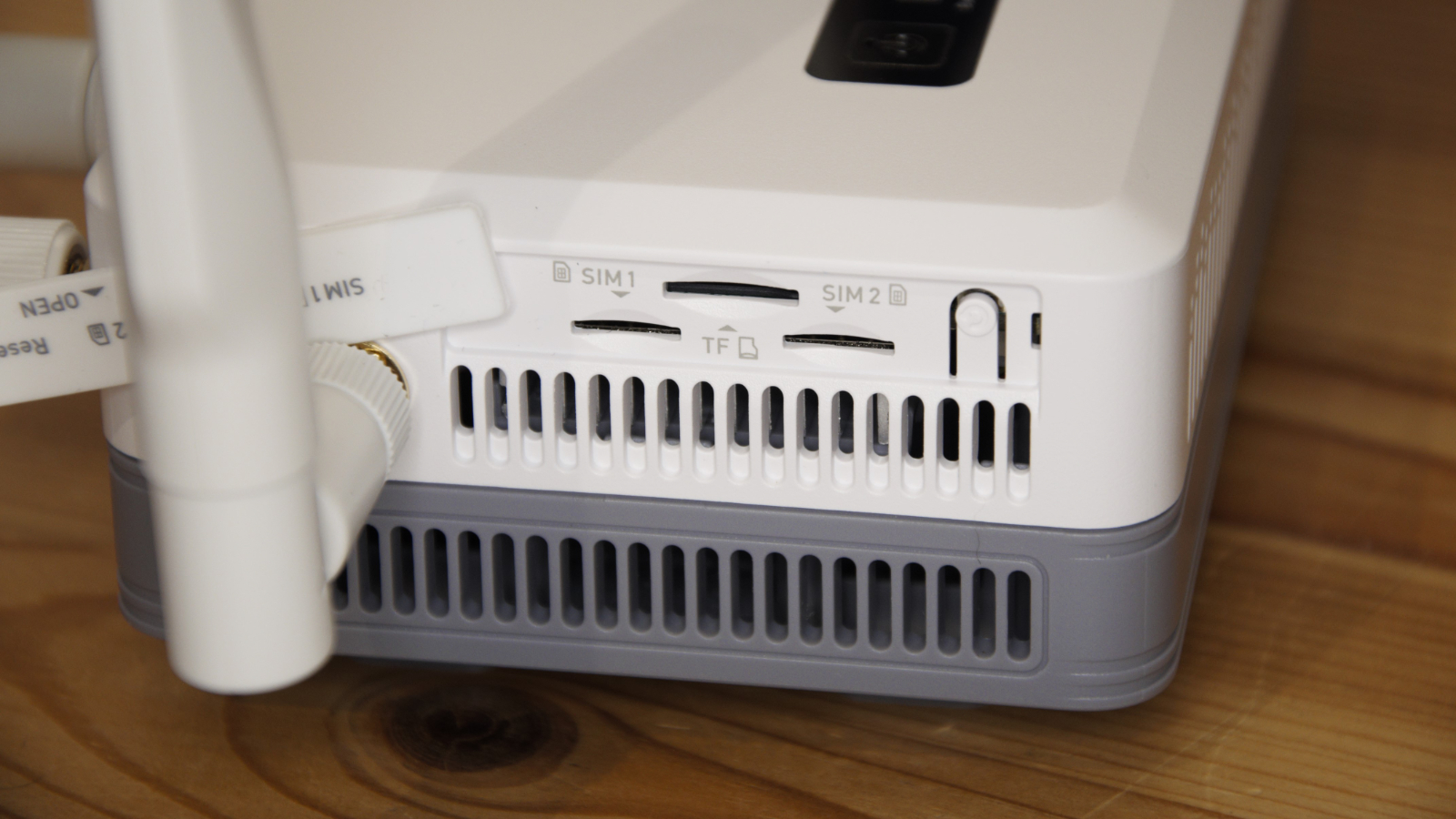
In the USA, things are radically different. There is no guarantee of 5G or even of two service providers, and the prices are generally much higher. A price of $65 is the norm for ‘unlimited’ service, but limits are often put on how much data can be used for a hotspot, and speed limits are put on all-you-can-eat connections.
Those paying $130 for two SIMs and potentially another $100 for broadband might find this an expensive way to guarantee 24/7 internet access, but those are the current economic realities of some regions.
In short, in Europe, having this hardware configured with dual SIMs and connected to an existing broadband service is something that home workers might consider a reasonable expense. Elsewhere in the world, only business locations with multiple users might be comfortable with the ongoing costs of using the GL-EX3000 to its full capabilities.
The disparity is so significant that it entirely alters the argument about whether this hardware is a good investment.
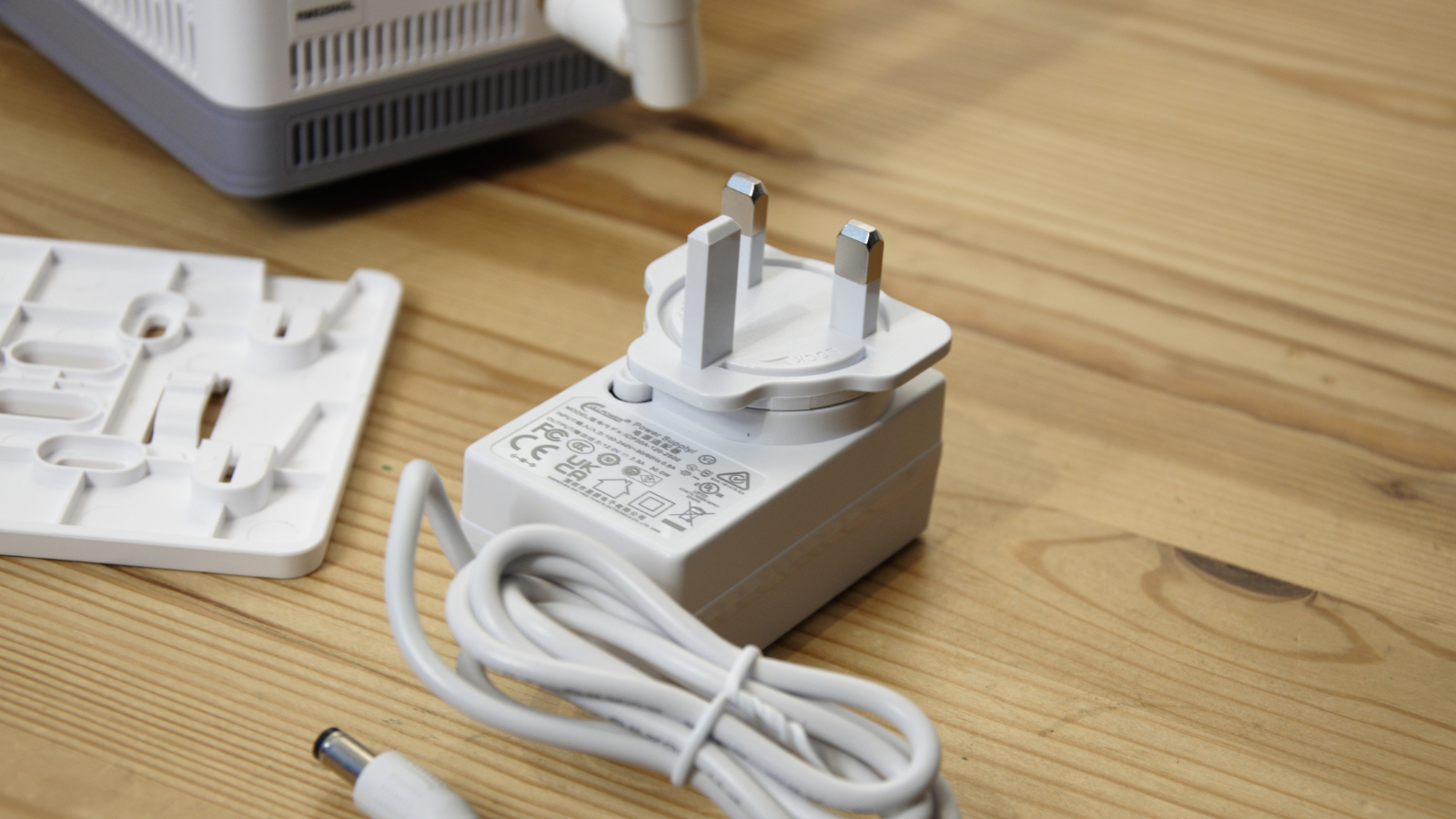
- Camera score: 4/5
GL-iNet Puli AX: performance
- 5G comms
- Potential vs reality
- Battery support
The performance of this router as a WiFi access point is reasonable, if not exceptional. The commonality of chips on routers has started to boil performance down to a level where it is hard to divide them, but unless you’ve some client hardware that can access quad-band arrangements, the performance over 5GHz should be sufficient for most mobile devices.
Where things get less obvious or quantifiable is with cellular data services and exactly what speeds you can expect from them.
With a reliable 5G connection, speeds in excess of 500Mb/s can be had, not that the especially dark corner of Cambridgeshire your reviewer lives presented anything that impressive. The best I achieved over 5G on a single SIM was just 16Mb/s download and 4Mb/s upload, but that was better than a 4G connection from the same service provider.
These numbers are not a reflection of the GL-EX3000 but of the abysmal speeds that O2 can offer in some suburban areas of the UK. Other providers might deliver much better speeds, but it's worth researching what you can expect (by using a 5G mobile phone) before jumping in with both feet and cancelling the wired broadband.
Having more than one service running in load-balanced mode would obviously improve speeds and resilience but doubling the cost of monthly overheads.
In short, performance can be good, even if it wasn’t for this reviewer, but that’s not a failing of GL-iNet and its hardware.
An unusual feature of this design is the battery, providing 6400mAh of power or 47.4Wh. The average power consumption of the router is less than 14W, which should equate to at least three hours of operation on battery in the event of a mains power failure but probably much longer than that.
How useful that is will depend on having battery-powered clients, that the mains outage doesn’t impact the mobile network or the services you are trying to access. It’s more than enough to handle short blips in power, and the battery recharges once power is restored.
Enhanced resilience of this type isn’t a feature we see often, but the GL-EX3000 makes a strong case for it.
- Performance score: 4/5
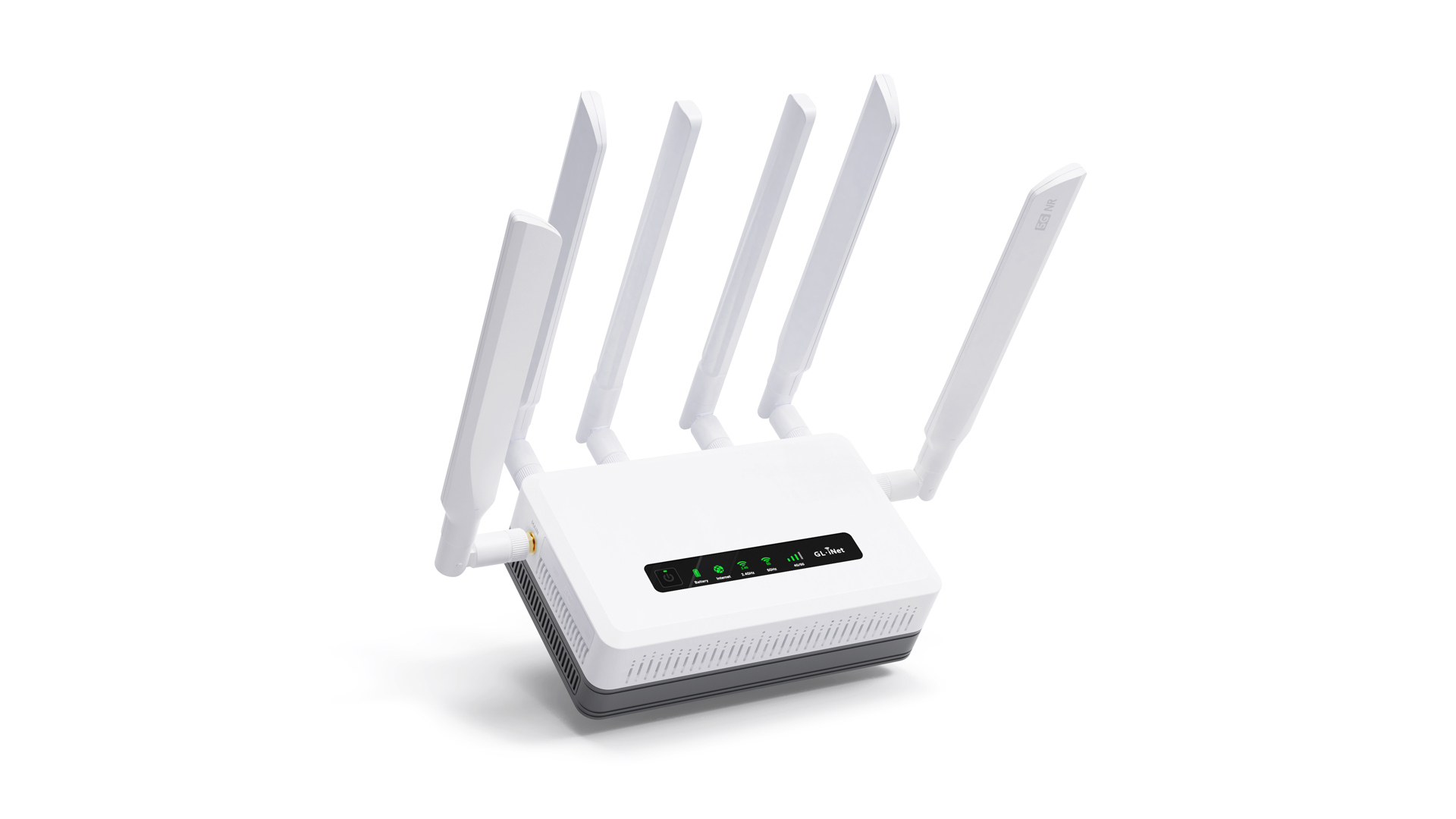
GL-iNet Puli AX: Verdict
There is plenty to like in this router, especially for those living in rural areas where power and internet connections can be less reliable. The snag is that in those locations, finding a 5G service might prove more challenging than for city dwellers.
Power outages are much less common for Europeans than in the USA, but conversely, 5G is more likely to be available. In the USA, power loss is more likely, and 5G services are less common. Therefore, Americans are the ones who really need the GL-EX3000, but only if they have local cellular services that they can rely upon. The problem with this plan comes when power loss also impacts the cell towers, which could happen in extreme weather conditions, leaving the router with no working failover.
It’s likely to find the most favour in those regions where the services normally work, but the loss of power or broadband connection would devastate a running business. The GL-EX3000 might then stop the digital sky from falling, but only if the devices using that service can function without power.
But again, operating in an office block, for example, without power would be considered an unacceptable safety issue in most regions, even if it was for a relatively short period.
As part of a failover plan, this router ticks many boxes, but it assumes many other systems have been hardened against the loss of power to use the continuation it can achieve.
Therefore, the cost of buying this hardware might ultimately be the cheap part of a project that can maintain business services in the event of power or Cellular service interruptions.
The more I used this hardware, the more I liked its thinking and attention to detail.
My only concern is that this is plenty to spend on a router and then not fully exploit what it has to offer. This equipment is designed to merge wired and cellular data services to deliver either extra performance or high degrees of reliability. If you don’t have either of these priorities, then the GL-EX3000 probably isn’t the router for you.
Should I buy a GL-iNet Puli AX?
Buy it if...
Don't buy it if...
Didn't find what you wanted? Check out our selection of the best business routers







